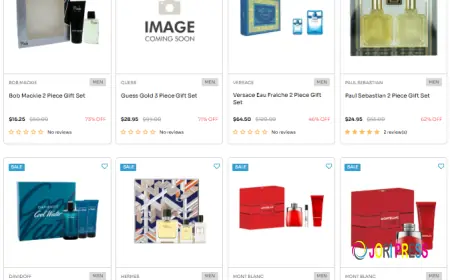Indonesia Disposable Tableware Market: Key Drivers & Trends
The Indonesia disposable tableware market grows steadily, fueled by urbanization, rising foodservice demand, youthful consumer lifestyles, cultural events, and innovation in affordable, convenient, and sustainable products meeting evolving hygiene and convenience needs.

Introduction
The Indonesia disposable tableware market is undergoing a period of steady expansion, supported by a combination of demographic dynamism, cultural traditions, and rapid growth within the country’s foodservice sector. Long associated with convenience and affordability, disposable tableware in Indonesia is no longer a purely functional necessity—it has become part of a broader lifestyle and social narrative shaped by urbanization, youth-driven consumerism, and the rise of informal and small-scale food businesses.
In 2024, the market was valued at USD 1.14 billion and is forecasted to reach USD 1.69 billion by 2030, expanding at a compound annual growth rate (CAGR) of 6.8%. This trajectory underscores how disposable tableware is deeply woven into Indonesia’s evolving social and economic fabric. While affordability remains the most important consideration, cultural practices such as communal dining, weddings, and festivals continue to fuel cyclical but recurring spikes in demand.
At the same time, the rise of micro and small enterprises—especially in the street food, quick-service, and catering sectors—has elevated demand for accessible, lightweight, and cost-effective cups, bowls, and plates. For many of these businesses, disposable tableware is indispensable, serving as both a practical operational requirement and a facilitator of scale in highly competitive environments.
This detailed analysis explores the drivers, challenges, emerging trends, and future opportunities of the Indonesia disposable tableware market. It also highlights how businesses can align their strategies to tap into cultural and demographic dynamics while addressing pressing issues such as logistics, affordability, and sustainability.
Industry Key Highlights
-
Market Size in 2024: USD 1.14 Billion
-
Forecasted Size by 2030: USD 1.69 Billion
-
Growth Rate: CAGR of 6.8% (2024–2030)
-
Leading Product Segment: Disposable Cups, driven by the booming beverage sector (coffee chains, bubble tea, juice bars)
-
Fastest-Growing Product Segment: Disposable Bowls, fueled by demand from street vendors and traditional Indonesian cuisine
-
Key Demand Driver: Social gatherings, communal dining, festivals, and ceremonies
-
Core Challenge: Fragmented distribution and high logistics costs in less-developed regions
-
Competitive Landscape: Intensely price-sensitive, with SMEs and multinational brands competing for share
-
Sustainability Shift: Rising interest in lighter designs, biodegradable materials, and eco-friendly alternatives
Download Free Sample Report - https://www.techsciresearch.com/sample-report.aspx?cid=30591
Market Drivers
1. Demographic Dynamism and Youth-Centric Consumption
Indonesia is one of the world’s most populous nations, with a large proportion of its population under the age of 35. This youth-driven demographic is playing a pivotal role in shaping demand. Millennials and Gen Z consumers value convenience, mobility, and affordability in their consumption habits. From takeaway beverages to outdoor dining, disposable tableware has become an integral enabler of their lifestyles.
Their openness to new dining formats—such as bubble tea, specialty coffee shops, and fast-casual restaurants—has propelled disposable cups and packaging into mainstream daily use. For these younger consumers, disposables are not merely about utility but about aligning with modern lifestyles that emphasize speed, convenience, and social engagement.
2. Rise of Micro and Small Enterprises
Indonesia has a thriving informal and small-scale food economy, ranging from street vendors and hawker stalls to home-based catering businesses. These enterprises rely heavily on affordable, lightweight, and versatile disposable bowls, plates, and cups to serve customers efficiently.
Street food culture, in particular, is one of the strongest pillars of demand. Vendors selling noodles, soups, and rice-based meals often choose disposable bowls as the most practical option for serving high volumes of customers quickly and affordably. The sector’s reliance on disposables makes it an important driver of recurring demand.
3. Cultural and Social Traditions
Indonesia’s cultural fabric is rich with festivals, weddings, religious ceremonies, and community gatherings, all of which create surges in demand for disposable tableware. Communal dining is a defining element of Indonesian society, and large events often require affordable and hygienic solutions for serving food to dozens or even hundreds of attendees.
Disposable plates and cups thus play a dual role: they enable cost-effective catering while also supporting the hygiene and convenience expectations of large gatherings. These cyclical cultural events provide a consistent rhythm to consumption patterns throughout the year.
4. Growth of the Beverage Sector
The expansion of beverage culture has been one of the most transformative forces in the Indonesian disposable tableware market. Coffee chains, bubble tea outlets, juice bars, and convenience-store drink counters have multiplied rapidly in recent years, particularly in urban centers such as Jakarta, Surabaya, and Bandung.
This has significantly increased demand for disposable cups, lids, and straws. The popularity of takeaway beverages among younger demographics has entrenched cups as the largest product category in the Indonesian market.
5. Food Delivery and Catering Services
The proliferation of online food delivery platforms has strengthened the utility of disposable packaging. Restaurants, catering companies, and cloud kitchens rely on bowls and containers that are sturdy, leak-proof, and heat-retentive. For businesses, disposables are critical not only for customer satisfaction but also for operational efficiency in fulfilling large orders.
Corporate catering and small-scale event services are also increasingly dependent on disposable tableware, underscoring its institutional importance alongside household use.
Emerging Trends
1. Premiumization in Disposable Tableware
While affordability remains the primary driver, there is a growing trend toward premium disposable tableware, particularly in urban areas. High-quality plates, bowls, and cups with improved durability, design, or premium finishes are gaining traction among middle-class consumers, restaurants, and event organizers.
Products that mimic ceramic or glass finishes, compartmentalized plates for bento-style meals, and sturdier bowls for soups and curries are increasingly in demand. This premiumization caters to consumers who value aesthetics and functionality while still requiring the convenience of disposables.
2. Lightweight and Material-Efficient Designs
Local manufacturers are innovating with lighter, material-efficient products that reduce costs while maintaining functionality. This innovation not only makes disposables more affordable for price-sensitive consumers but also appeals to businesses operating on thin margins, such as food stalls and small caterers.
Lighter products also reduce logistics and transport costs, addressing one of the market’s structural challenges.
3. Eco-Friendly Alternatives
Growing environmental awareness is creating momentum for biodegradable and compostable products made from sugarcane bagasse, bamboo, and recycled paper. While adoption is still limited due to higher costs, eco-friendly products are gradually making inroads among middle- and upper-income consumers, as well as international hospitality chains operating in Indonesia.
Government efforts to curb single-use plastics are also nudging manufacturers to explore alternatives that balance sustainability with affordability.
4. Street Food Modernization
Indonesia’s street food culture is undergoing a shift as vendors and small eateries embrace modern packaging solutions. Disposable bowls designed for soups, noodles, and rice meals are becoming increasingly standardized, offering improved leak resistance and portion control.
As street food culture evolves alongside urbanization, disposable tableware will remain central to its growth, particularly as consumers prioritize hygiene and convenience.
5. Regional Growth Hotspots
While Java remains the largest market, regions such as Sulawesi are emerging as high-growth hotspots. Rapid urban development in cities like Makassar and Manado, coupled with infrastructure improvements, tourism growth, and rising disposable incomes, is fueling demand for modern foodservice and disposable products.
Sulawesi’s cultural emphasis on communal dining and festivals further reinforces demand, positioning it as the fastest-growing regional market within Indonesia.
6. Branding Through Packaging
Disposable tableware is increasingly serving as a branding medium for cafes, restaurants, and beverage chains. Customized logos, colors, and sustainability labels on cups and containers are helping businesses strengthen their identity and connect with socially conscious consumers.
This trend is particularly strong in the booming beverage sector, where visual branding plays a critical role in customer engagement.
Competitive Analysis
The Indonesia disposable tableware market is intensely competitive, characterized by a mix of domestic manufacturers, SMEs, and multinational corporations.
Key Players
-
PT. Wingoh Albindo
-
PT Maesindo Indonesia Ltd
-
PT Suparma Tbk
-
PT Pura Group (Pura Barutama)
-
PT Alkindo Naratama Tbk
-
Foopak (Asia Pulp & Paper brand)
-
Plasindo Lestari
-
BMJpaperpack (Digipack)
-
Huhtamäki Oyj
-
Kedawung Setia Industrial Tbk
Competitive Landscape Characteristics
-
Price sensitivity: Local SMEs compete aggressively on affordability, often engaging in price wars.
-
Innovation pressure: Larger corporations differentiate through premium designs, eco-friendly alternatives, and branding.
-
Quality concerns: Low-cost products sometimes struggle with durability, impacting consumer trust.
-
Regional fragmentation: Distribution is stronger in urban centers but limited in rural and remote regions.
Industry Challenges
-
Logistical Barriers: High transportation costs and poor infrastructure in less-developed regions limit accessibility.
-
Consumer Perception: Low-cost products often face criticism over durability and quality, impacting trust.
-
Price Wars: Intense competition among SMEs erodes profit margins and discourages innovation.
-
Sustainability Costs: Eco-friendly alternatives remain expensive, restricting mass adoption.
-
Regulatory Pressure: Increasing restrictions on single-use plastics present compliance challenges.
Future Outlook
The Indonesia disposable tableware market is expected to maintain robust growth through 2030, supported by demographic strength, cultural traditions, and expansion of the foodservice sector.
Key directions shaping the future include:
-
Mainstreaming of Eco-Friendly Products: Sustainable alternatives will grow in acceptance, particularly in urban areas.
-
Premium Product Growth: Catering, events, and upscale delivery services will demand higher-quality disposables.
-
Regional Expansion: Emerging markets such as Sulawesi will outpace national averages in growth.
-
Hybrid Usage Models: A balance between reusables and disposables will emerge, especially among environmentally conscious consumers.
-
Digital Distribution: Online platforms will increasingly connect producers to consumers and small businesses, bypassing traditional logistical constraints.
10 Benefits of This Research Report
-
Provides accurate market sizing and forecasts for 2024–2030.
-
Identifies growth opportunities across product categories and regional markets.
-
Analyzes structural and cultural drivers shaping demand.
-
Explores consumer behavior shifts and lifestyle influences.
-
Highlights competitive strategies of leading companies.
-
Examines sustainability and innovation trends.
-
Tracks regional demand variations and emerging growth hotspots.
-
Helps businesses make data-driven investment decisions.
-
Provides frameworks for strategic planning and product development.
-
Equips stakeholders to navigate regulatory and environmental challenges.
The Indonesia disposable tableware market stands at the intersection of culture, affordability, and modernization. Festivals, communal dining, and social gatherings continue to underpin steady demand, while youth-driven lifestyles and the rapid rise of the beverage and food delivery sectors accelerate adoption.
Despite challenges such as fragmented logistics, price competition, and sustainability pressures, opportunities remain significant. Businesses that innovate with lightweight, premium, and eco-friendly designs, while strengthening distribution networks and leveraging online platforms, will be best positioned to succeed.
The long-term outlook for the market is bright, with growth anchored in Indonesia’s vibrant cultural traditions and youthful consumer base. Companies that align functionality with affordability, sustainability, and cultural relevance will capture enduring opportunities in this dynamic sector.
TechSci Research LLC
420 Lexington Avenue, Suite 300,
New York, United States- 10170
M: +13322586602
Website: www.techsciresearch.com
What's Your Reaction?
 Like
0
Like
0
 Dislike
0
Dislike
0
 Love
0
Love
0
 Funny
0
Funny
0
 Angry
0
Angry
0
 Sad
0
Sad
0
 Wow
0
Wow
0

















































